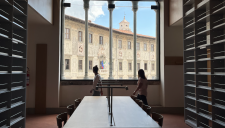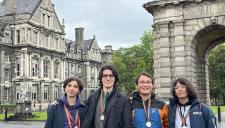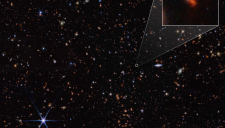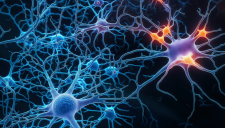According to the study coordinated by the Scuola Normale Superiore and the University of Pisa, the micro RNA mir-541 may participate in the formation of the corpus callosum, the major connection system between the right and left hemispheres of the brain, which is absent in all other vertebrates.
Pisa, 31 May 2021.
A tiny RNA molecule, mir-541, may mark the major brain difference between “us”, placental mammals, and the other vertebrates. This is the suggestive hypothesis stemming out from a collaborative study between the Scuola Normale and the University of Pisa, published on Stem Cell Reports.
Mir-541, a micro RNA molecule present in humans and in placental mammals, might play a crucial role for the making of the corpus callosum, the bridge of nervous fibers inside the brain that is essential for the communication between the right and left hemisphere. In humans, 200 million fibers cross through the corpus callosum. The other vertebrates, including marsupial mammals, do not have this connection, a difference that marks a distinct evolutionary gap.
The study was coordinated by Federico Cremisi (researcher in the Laboratory of Biology of the Scuola Normale Superiore Bio@sns, directed by Antonino Cattaneo), and by Robert Vignali (Dipartimento di Biologia, Università di Pisa), and signed as a first author by Manuela Martins (PhD Student of the Scuola Normale). The study merges tools of molecular developmental biology, transcriptomics, bioinformatics and statistical and mathematical analysis.
The crucial action of mir-541 is to delay the synthesis of the Satb2 protein, whose function is essential in a precise temporal window of cerebral cortical development. This delay would allow some cortical neurons to send their fibers across a new and faster road of connection (the corpus callosum) rather than through the older and slower pathway (the anterior commissure), present in non-placental mammals. The significant result comes out from a multisciplinary collaboration among several research groups, that have used human and mouse stem cells to study the action of micro RNAs during their in vitro differentiation into cortical neurons.
“We observed that when miR-541 is antagonized in our cultured neurons, the appearance of SATB2 protein is anticipated; and this, in light of observations from other laboratories, may impair the formation of the corpus callosum – the researchers say-. The implications of this molecular mechanism are potentially enormous, both from an evolutionary and from a clinical point of view. In fact, many malformations of the corpus callosum are described whose causative bases are unclear or completely unknown. We are now aiming to discover the action of the genes regulated by miR-541, and the genetic differences that make this crucial connection between the cerebral hemispheres so unique”.











